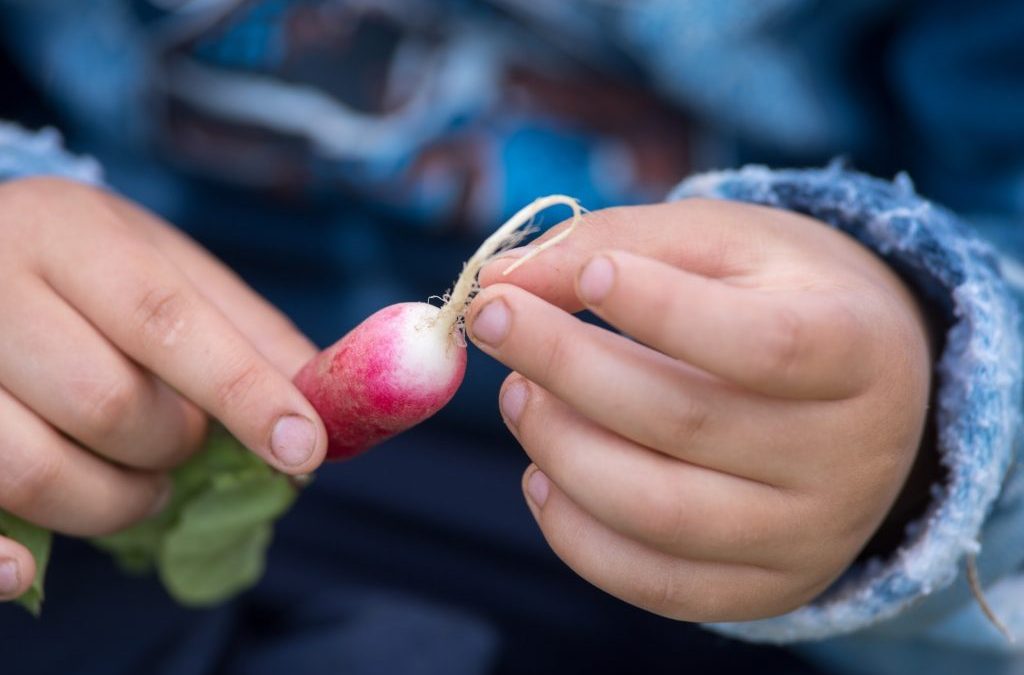
by Michelle | Oct 25, 2018 | Eat Well, Recipes
Serves 5
INGREDIENTS
2.5 oz. cream cheese
6.5 oz. cheese, cheddar, yellow, reduced fat, shredded
1/3 cup yogurt, low-fat, plain
2 Tablespoons milk, 1% low-fat
20 crackers, whole grain, low-salt
INSTRUCTIONS
Place cream cheese and cheddar cheese in a food processor and blend until smooth.
Add yogurt and milk. Puree again until smooth.
Transfer dip to a serving bowl.
Serve with whole grain crackers.
Refrigerate leftovers.
NUTRITIONAL FACTS
Calories: 216, Total Fat: 12.40 g, Saturated Fat: 6.75 g, Cholesterol: 30.64 mg, Sodium: 360.65 mg, Calcium: 378.88 mg, Protein: 13.57 g, Carbohydrates: 13.43 g, Dietary Fiber: 1.68 g
Dietitian’s Tip: A fun way to get calcium, protein and whole grains.

by Michelle | Oct 25, 2018 | Why I'm In
Tillamook County Wellness continues its work because of the extraordinary level of engagement and collaboration among partners, volunteers and the community. The series “Why I’m In,” features what has inspired and motivated people to work toward a common goal of improving community health.
“WHY I’M IN …” Anne Goetze, Senior Director of Nutrition Affairs, Oregon Dairy and Nutrition Council (ODNC)
What drew you/your organization into Tillamook County Wellness?
Goetze: The Oregon Dairy and Nutrition Council serves on behalf of farmers and processors in Oregon to build confidence and trust in dairy and the important role dairy foods play in a healthy diet. In 2014, we proposed a Learning Connection Town Hall event to our statewide partners in nutrition and health, and they all pointed to Tillamook County. We found a group of very strong leaders committed to wellness and were off and running. At the Town Hall in 2015 Commissioner Baertlein shared his vision for a “Year of Wellness” and launched what has become a successful countywide effort. It was a natural fit. It was the right thing to do.
What, if any, changes have you seen come about as a result of this work?
Goetze: Through this work, the community is generating connections at an even deeper level to work toward a common goal for greater impact. For example, the YMCA is now collaborating with the Columbia Pacific CCO to offset membership fees for families on the Oregon Health Plan and they are partnering with Northwest Senior & Disability Services and local healthcare providers to offer year-long Diabetes Prevention Classes. At the end of our first year, the Y reported continuous increases in membership since the Year of Wellness began – something that had never happened before.
What have you learned from being involved in this work?
Goetze: This experience has reinforced that theoretical principles can be translated in practical ways. I have never worked on a project quite like this. It has all the right elements. It’s based on solid, reliable, evidence-based research and it incorporates community connectivity and shared values. Bringing people together with a common vision is really powerful.
What are your hopes for this work as it relates to you/your organization?
Goetze: We know that healthy eating helps prevent disease and that dairy products are an irreplaceable part of a healthy diet. Every week there are more studies that support the consumption of dairy foods, whole grains, vegetables, fruits and protein foods to prevent diabetes and improve health. We are excited to share this through Tillamook County Wellness.
What are your hopes for this work as it relates to changing population health in Tillamook County.
Goetze: Of course I want people to make healthier food choices and be more physically active. I want people to love food and to be well. This doesn’t have to be complicated. People often put off making these changes because they feel overwhelmed. It’s really about taking small steps. There’s something here for everyone.

by Michelle | Oct 18, 2018 | Recipes
Recipe and photo from www.FoodHero.org
Number of servings: 32
Time for preparation (including preparation and cooking): 15 min
Ingredients:
1 package low-fat crescent rolls
4 ounces nonfat cream cheese
1⁄4 cup nonfat mayonnaise
1⁄2 cup nonfat sour cream
1⁄2 teaspoon dried basil (or thyme)
1⁄2 cup broccoli, chopped
1⁄2 cup cauliflower, chopped
1⁄4 cup green pepper, finely chopped
1⁄2 cup carrot, finely chopped
1⁄3 cup low-fat shredded cheddar cheese
Directions
- Heat oven to 350° F.
- Unroll the crescent rolls and place them on a baking sheet to bake. Bake for 10 minutes.
- Mix together the cream cheese, mayonnaise, sour cream and basil until smooth.
- Spread mixture on the cooled crescent rolls.
- Sprinkle the chopped vegetables and shredded cheddar cheese on top of the cream cheese mixture. Serve immediately.
- Refrigerate leftovers within 2 hours.
Notes
- Try substituting whole wheat flour tortillas for crescent rolls.
- Use vegetables that are in season and lower in cost.

by Michelle | Oct 18, 2018 | Eat Well
By Rachel Pettit, Food Roots’ Farm to School Program Coordinator
What is farm to school?
Hands in the soil.
Seeds. Sprouts. Fruit.
Sharing and not being afraid to try something new.
Laughter. Smiles. Teamwork.
Farm to school is also a general term used to describe work being done across the United States to connect students with local food and encourage the development of healthy lifestyle behaviors. Tillamook County is a community rich in agricultural tradition that should be celebrated and shared with children of all backgrounds, farm kid or not.
This agricultural tradition in Tillamook is both deep and wide. Many families hold dairymen and women close, but a full diet of locally produced foods is available if you know where to look. Fruit, vegetables, meat, fish, seafood, eggs, sheep’s and goat’s milk, dairy, honey, bread, teas, and herbs are all produced in our community. Farm to school seeks to connect students with as many of those producers as possible.
In addition to celebrating agriculture and local food, farm to school programs also provide students with exciting opportunities to explore the world. Children are curious and eager to try new things, especially if those things are outside or involve eating! Students who participate in farm to school activities get to spend part of their school day gardening, cooking, conducting science experiments, spending time on farms, talking with local farmers who visit the classroom, and tasting all different kinds of produce.
Their seeds may not always grow, they may get a little messy, they may not love kale, but all of these students are building lifelong skills and relationships with their neighbors in the process.
In the spring, classrooms at Nehalem Elementary School, Garibaldi Grade School and South Prairie Elementary School hosted visiting farmers including Moon River Farm and Green Fork Farm both in Nehalem, and Leuthold Dairy, Wilson View Dairy, Zweifel Farm Eggs, and Zweifel Custom Farming who all call Tillamook home. In May, two classes of students from Nehalem Elementary School spent part of their school day on a field trip to Nehalem River Ranch. This summer, students from Nestucca Valley Elementary School harvested 100 pounds of produce and sold it at the Pacific City Farmers Market. Throughout the course of the 2017-2018 school year, students at seven schools in Tillamook County tasted new foods grown by local farmers.
Farm to school programs may be small, but they have big impacts on a community’s health and economy. Students who participate are more likely to eat fresh fruits and vegetables at school and are more likely to ask for extra veggies at home. They do better in school, especially in science, and have positive behavior changes. Farmers gain exposure, and families learn where they can buy local foods.
School gardens and Food Roots’ farm to school program are part of student life at Nehalem Elementary, Garibaldi Grade School, South Prairie Elementary, Tillamook Junior High, Nestucca Valley Elementary, and Neskowin Valley School. Grant funding from the Oregon Department of Education, and our partnership with national service organization FoodCorps help us provide regular farm to school lessons that complement what students are already learning in science, math, English, language arts, and social studies.
Our favorite lessons are out in the garden planting and caring for vegetables, or cooking simple, tasty recipes in the classroom with local produce. We also conduct regular all school Tasting Tables, participate in school Family Nights, help maintain school gardens, organize field trips to local farms or farmer visits to classrooms, and we run the School to Market project where students grow produce and sell it at market.
This year is also our second annual participation in National Farm to School Month, an October celebration that helps recognize farm to school programs like ours. We’re marking this season of abundance by harvesting the last of school garden produce and planting vegetables that will grow slowly through the winter for spring eating.
We’ll also be hosting a Tasting Table at each of our partner schools for students to try a special potato variety called the Makah Ozette fingerling. This variety of potato was never cultivated in Europe and made its way from the Andes Mountains to the Pacific Northwest via overland trade routes over hundreds of years. Food geneticists have proved this through recent testing, and we purchased the seed potatoes from a farm in Oregon City. Students planted the seed potatoes at the end of the school year and harvested the mature potatoes in September. Now they’ll be able to eat the fruits of their labor and learn a little bit more about how the foods we eat today carry generations of stories. A truly special celebration!
The final way we’re marking National Farm to School Month is with Local Food Open Houses, where school district families have an opportunity to try locally grown products and get to know local growers! Watch the Food Roots website or Facebook page for event announcements.
For more information about Farm to School Month, volunteering with school gardens, hosting students on your farm, or anything at all related to farm to school in Tillamook, please contact Rachel Pettit, Food Roots’ farm to school program coordinator, at rachel@foodrootsnw.org .

by Michelle | Oct 12, 2018 | Why I'm In
The Tillamook County Wellness “Why I’m In” interview series highlights our community partners and what has inspired and motivated them to work toward the common goal of improving community health.
What drew you/your organization to Tillamook County Wellness?
Swanson: As a member of the media, covering stories on health and wellness is important to me. I’m all about education and outreach. It’s important to get this information out into the community.
There is so much bad news in the world. This is about sharing the good news and that’s really what people want to hear about. I feel like our community was ready for this.
I’ve been involved with the wellness efforts from the beginning. We always wanted this to be about positive messaging. No shaming. Just simple, practical tips – eat a little better, walk a little more – that kind of thing. That’s what appealed to me and made me want to get involved.
What, if any, changes have you seen come about as a result of this work?
Swanson: If you did a Marketing 101 study, this would be an example of how well a campaign will work when the community is ready. I have been amazed at how quickly this concept of Wellness has caught on. The fact that about 85% of people recognize Tillamook County Wellness as a brand is absolutely amazing.
The other thing that has been so great is to see all of our community partners working together and that this is truly county wide. It’s been so much fun to work with innovative people and see some of the outside-of-the-box thinking.
What have you learned from being involved in this work?
Swanson: I have learned how to slow down and assess things. I’m totally a boots-on-the-ground, let’s-get-started kind of person. Yet, early on, it was clear that what we were doing wasn’t sustainable.
When we stepped back from the original YOW effort to focus on Diabetes prevention, I was afraid we would lose momentum. I have learned that sometimes you shouldn’t just jump in. Sometimes, even if we don’t want to, we need to stop the horse and make sure we are on the right horse, on the right road, going the right direction and doing it for the right people.
That was really hard for me – to hit pause – but now I see that this was the right path.
The other thing I have learned is that change can be really hard both for individuals and for organizations, and it doesn’t happen overnight. All good things take time.
What are your hopes for this work as it relates to you/your organization?
Swanson: As a media representative, my job is incredibly stressful. If I could, I would prefer to just cover the good things like health and wellness, outdoor activities, gardening and food. Even though that’s not realistic, this work is shaping our focus for the Tillamook County Pioneer. We really want to help our community through this platform. The work I am doing in Wellness aligns with what we want to do as an organization, providing the best possible news and resources we can for our community.
What are your hopes for this work as it relates to changing population health in Tillamook County.
Swanson: My hope is that we can keep building on what we have started, taking it to a larger scale to impact more people.
I also hope to see more of us embracing change. That’s part of developing community resilience and building a sense of community. You see that when mother nature deals us a blow – how people step up and help each other out in times of crisis.
I also like the idea of templating this and bringing it to other communities.





